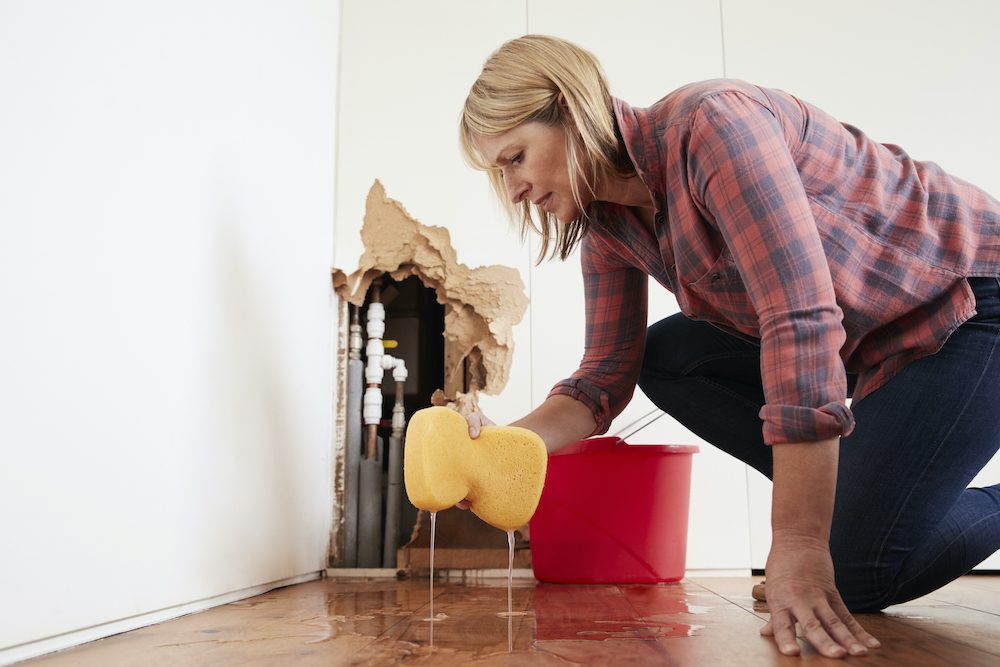Guide To Water Leak Detection At Home
Guide To Water Leak Detection At Home
Blog Article
Right here below you will discover a lot of helpful advice in regards to Hacks to detect leaks.

The moment you find a leakage, calling your plumber for fixings is the best option. Some small water leakages may not be visible. If you can not identify it with your naked eyes, here are some hacks that help.
Early discovery of dripping water lines can minimize a possible calamity. Apart from conserving you money, it will lessen the stress as well as irritation.
Inspect Water Usage
Evaluate your water bills and also track your water intake. As the one paying it, you must notice if there are any kind of disparities. If you find sudden changes, despite your consumption coinciding, it implies that you have leakages in your plumbing system. Keep in mind, your water costs must drop under the exact same array each month. A sudden spike in your expense indicates a fast-moving leak.
At the same time, a steady increase monthly, despite the very same behaviors, shows you have a slow-moving leakage that's additionally gradually rising. Call a plumber to extensively inspect your building, particularly if you feel a cozy location on your floor with piping below.
Analyze the scenario and check
Property owners need to make it a practice to examine under the sink counters and also even inside closets for any bad odor or mold development. These two red flags show a leakage so prompt interest is called for. Doing routine evaluations, also bi-annually, can conserve you from a major problem.
Check Out the Water Meter
Checking it is a proven way that aids you find leaks. If it relocates, that shows a fast-moving leakage. This indicates you may have a slow-moving leak that could also be underground.
Asses Outside Lines
Don't neglect to examine your exterior water lines also. Needs to water seep out of the connection, you have a loosened rubber gasket. One tiny leakage can squander bunches of water as well as spike your water costs.
Do a Food Coloring Test
When it comes to water consumption, 30% comes from toilets. If the shade somehow infiltrates your bowl throughout that time without flushing, there's a leak between the container and also bowl.
Inspect for stainings and damaging as the majority of pipes and devices have a life expectancy. If you believe dripping water lines in your plumbing system, don't wait for it to intensify.
The minute you discover a leak, calling your plumber for repair services is the ideal option. Some tiny water leaks might not be noticeable. Checking it is a guaranteed method that assists you find leakages. One little leakage can waste loads of water and also surge your water bill.
If you believe leaking water lines in your plumbing system, don't wait for it to intensify.
The Dangers of Undetected Water Leaks
Mold
One of the most common results of undetected water leaks in your home is mold. Under the right conditions, mold can begin to grow and spread in just a day or two.
Moisture from water leaks combined with humidity and lack of ventilation allow mold spores to germinate and start spreading.
And while household mold doesn’t carry the same health risks as substances like asbestos, they can cause allergic reactions in people sensitive to them or with asthma.
Structural Damage
When water leaks occur in places we can’t see — above the ceiling, behind walls or beneath floors — they often have time to do some serious damage before making themselves known.
You might notice cracks or bubbles appear in your walls or a slow drip or water from the ceiling.
These are signs of water leaks and buildups in the structure of your home. If you don’t jump on these problems soon enough, the wood frame that supports your house could start rotting, leading to costly repairs and increasing the risk of disasters like ceiling or wall collapses.
Water Waste
According to the Alliance for Water Efficiency, the average home can lose anywhere from 2,000 to 20,000 gallons of water per year due to leaks.
High numbers like that might make you imagine a burst pipe spewing out water. But believe it or not, even a small, constant drip from a kitchen sink could add up to over a thousand gallons of wasted water in a single year.
And if you live in a place where you pay for every gallon of water you use, that adds up to a lot of dollars down the drain. So we understand leaks are bad. Let’s take a look at some of the common (and not-so- common) water leaks you might find around your home.
Flush Valve Flapper
The flush valve flapper is a rubber flap that sits above the flush valve at the bottom of the tank. It’s attached to the flusher with a chain. Over time, it can get worn out and lose its seal, causing an endless flow of water into the toilet bowl.
These leaks are hard to detect since they’re usually silent, but there’s a little insider trick you can use with just a little dye or food coloring:
Put a few drops in the toilet tank. Check the water in your toilet bowl 15 minutes later. If any of the color made it into the toilet bowl, you’ll know what the culprit is.
Fill Valve
The fill valve is what replenishes your toilet’s tank water after you flush. If you’ve ever looked inside your toilet tank and seen water gushing out of an upright plastic valve, that’s a faulty fill valve.
https://meetflo.com/blogs/flo/how-to-find-and-repair-water-leaks-a-comprehensive-guide

I recently found that blog entry about Finding hidden leaks while looking around the internet. Sharing is good. You won't know, you will be helping someone out. We treasure reading our article about Detecting hidden plumbing leaks.
Report this page